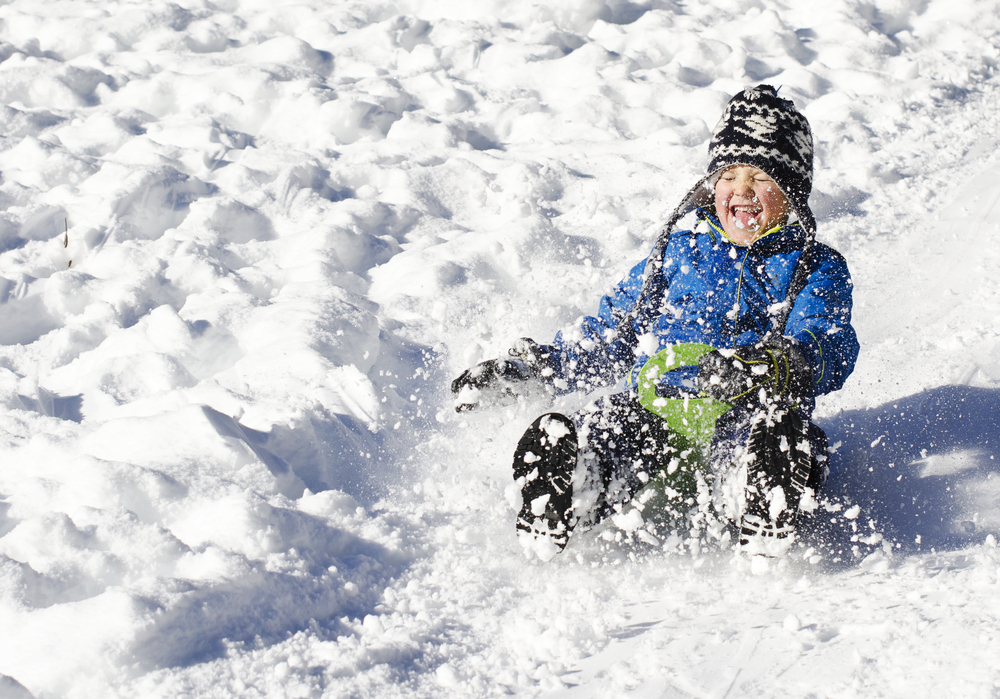Maybe the headline is a little dramatic, but think about it. As soon as that major snowfall hits your town, the first thing you want to do is grab your sled and hit your local hill. Heck, this is what children have been doing for generations now. But for parts of Canada and the United States, many kids won’t be able to take part in this classic winter pastime unless they want to break the law. Many cities across North America are currently imposing tobogganing bans because of the risks involved — a huge legal liability that many park owners don’t want to deal with.
For some places, the idea isn’t completely new. Hamilton, Ont. has had one in place for 15 years now, but not all residents are happy about it. There is currently a Change.org petition with over 1,000 signatures asking the city to revoke the ban. In Toronto, the Centennial Park Ski Hill to completely off limits thanks to a bylaw deeming the hill too dangerous.
While Canada has seen it’s share of bans and bylaws enacted to prevent sledders from using certain hills, places like Ottawa and Calgary have taken a different approach. Apart from telling riders what the best hills are in their area, they also like to provide them with important safety tips. This is a stark contrast to what’s happened in the United States. In Paxton, Illinois they simply bulldoze their hills to completely eliminate any liability concerns.
To be fair, tobogganing is a dangerous sport and closing high-risk hills as a safety precaution is absolutely necessary. “From an injury prevention perspective, tobogganing turns out to be a very high risk activity,” said Dr. Charles Tator in an interview with The National Post. In his 2008 book, Catastrophic Injuries in Sport and Recreation, Dr. Tator found tobogganing to be the fourth most risky sport for serious injuries – just behind diving, parachuting and snowmobiling. Now with that being said, according to The Canadian Institute for Health Information, tobogganing still doesn’t result in as many injuries as other popular winter activities such as skiing, snowboarding or snowmobiling. And like all sports, when you take the proper safety precautions, you reduce your risk of serious injury significantly.
Now don’t get me wrong, from a legal perspective I get it. Unfortunately, getting sued because someone had a tobogganing accident on your property isn’t uncommon. But banning the activity completely is not the answer. My issue with all this is how it will effect families and their children in the long haul. For one, we’re robbing them the opportunity to take part in an activity families have been doing for generations. Not to mention enabling a generation of young people to be lazy homebodies.
“I don’t like that idea, because we’ll just produce a bunch of fatties and couch potatoes, people who don’t exercise, and that’s not going to get us anywhere,” said Dr. Tator. Sure, you can go skiing instead, but for families living in the city it’s not a very accessible option, or an affordable one either.
And let’s not forget, this entire tobogganing ban trend will just bubble wrap our children even further. We are slowly taking away every opportunity for these children to learn how to monitor risk, use their judgement and learn how to be safe in structured, supervised play. Will they get hurt? Yes, quite possibly. But those risks exist in every sport. Parents just have to teach their children how to take the necessary safety precautions first aka WEAR A HELMET!
But hey, with the way things are going, children are just going to have to settle with building snowmen than experience the exhilaration that is tobogganing down a hill.

Leave a Reply